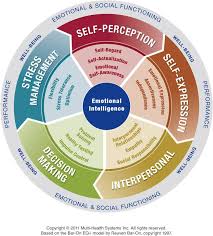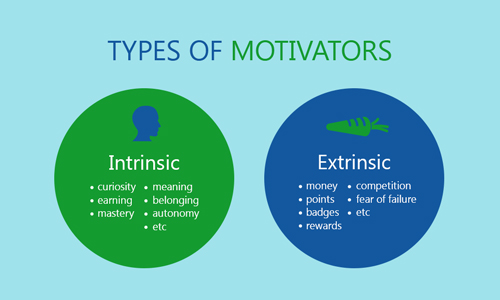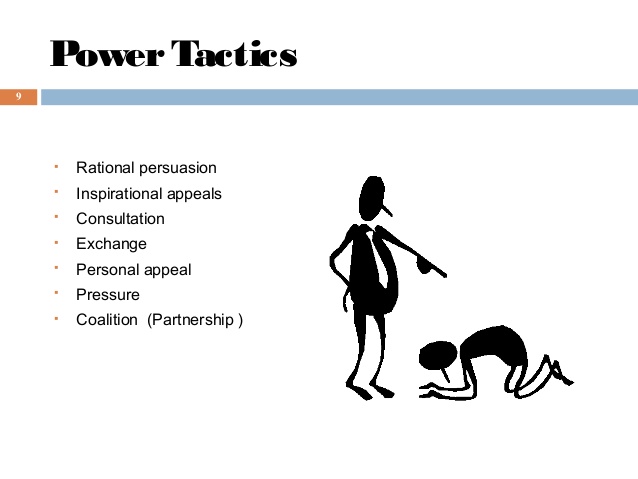Uber Technologies Inc. and the Major Issue
Uber is facing numerous lawsuits and scandals.One of the major lawsuits facing Uber Technologies Inc. concerns its car radar technology. According to Levin (2017a), Uber illegally acquired the car radar technology from Alphabet Inc. by downloading confidential files detailing the proprietary technology. Another lawsuit concerns the company’s efforts to engage in illicit business tactics (Mehrota, 2017). Former CEO, Travis Kalanick, is facing accusations of engaging in malfeasance and providing wrongful information to private investors who ended up pumping billions of dollars into the firm (Mehrota, 2017). Uber Technologies Inc.’s executives have also been accused of sexual harassment and engaging in gender discrimination. Uber is facing lawsuits concerning racial discrimination. According to Balakrishnan and Salinas (2017), the lawsuits claim that Uber favors Whites compared to people of color. Uber is facing lawsuits concerning retaliatory actions against employees who act as whistleblowers on various issues affecting the company. Uber is also facing employee rights issues, especially for disregarding minimum wage rate requirements for drivers in various countries.
Areas of Weakness
- Weak corporate culture at Uber.
- Lack of workforce diversity
- Inadequate motivational strategies
The involvement of senior executives in unethical practices fostered the development and prevalence of an unethical culture. According to Chafkin (2017), both the former CEO, Kalanick, and the mid-level managers engaged in illegal conduct. In a recent news release, the current CEO noted that it is time for Uber to “move from an era of growth at all costs to one of responsible growth” (Khosrowshahi, 2017, p.1). This means that the previous leadership overlooked ethical leadership in order to achieve growth and profitability.
Another key area of weakness is in ensuring there is a diverse workforce. The major diversity issues at Uber identified in this report are gender-based discrimination and ethnicity (Chafkin, 2017).
The company is also having issues to do with staff motivation. There are several reports of employees, mainly drivers, voicing their concerns over how the management handles employee rights. Uber drivers around the world have been fighting for better remuneration and the need for the company to observe minimum wage standards.
Related: Power,politics and culture at Uber Technologies Inc Position paper
Proposed Solutions
- Rewrite the ethical code of conduct.
- Ethics training.
- Establish a new policy for diversity.
There is need to change the corporate culture at Uber. It is important to rewrite the ethical code of conduct at the organization and ensure that employee follows the new ethical guidelines. There is a need for training of all employees with regard to the proposed ethical guidelines. Training will ensure that employees adopt ethical conduct as they conduct various activities. There is need to adopt a strong policy framework for encouraging diversity at Uber. A proper policy framework would ensure gender balance during employee recruitment. There is a need for a workplace relationship policy that may guide office romance and define what constitutes sexual harassment. Educating the senior leadership about the legal issues concerning gender and ethnic discrimination can also help in alleviating the diversity issue.
Most Important EI Building Block

The EI building block that would impact management’s ability to enhance employee performance and job satisfaction is the interpersonal realm. The interpersonal realm comprises of the people skills, which is the ability to establish and nurture good relationships with others (Stein & Book, 2011). The interpersonal realm has three categories. These are empathy, interpersonal relationships, and social responsibility. Empathy refers to the ability to understand and appreciate other people’s thoughts and feelings (Stein & Book, 2011). Empathetic leaders are able to understand the world from another person’s perspective. Empathetic leaders can better understand the challenges and fears facing the employees. As such, they can address the fears leading to a positive work environment that promotes job performance and satisfaction.
Interpersonal relationships entail the ability to develop mutual and trusting relationships with others (Stein & Book, 2011). In such relationships, the parties involved develop a sense of trust towards each other. It is important for leaders to forge sound relationships with the employees where no party exploits the other. The management can influence the employees to perform various tasks where both the management and the employees have forged strong relationships. This can promote job performance and job satisfaction.
Social responsibility refers to the ability to be a valuable member of a particular social group and the larger society (Stein & Book, 2011). Where management shows social responsibility through sound leadership, employee performance is also high.
Core Concepts of EI and Decision-Making Efficacy
- Interpersonal skills.
- Decision-making skills.
- Self-perception.
- Stress management.
- Self-expression.
The core concepts of emotional intelligence would be integral in enhancing the social skills and the decision-making efficacy of the management team. The interpersonal realm of emotional intelligence enables individuals to learn how they can relate with others and in a cordial manner (Stein & Book, 2011). The interpersonal realm can enhance the social skills by enabling the organizational leaders to learn how they can develop and maintain positive work relationships. Self-perception enables individuals to understand themselves in a better way (Stein & Book, 2011). Leaders with self-perception are able to understand their feelings in a more profound way. For instance, they can understand how their emotions affect their own actions as well as the actions of others.
Another core concept of EI is decision-making. Decision-making involves the ability of the individual to use emotions to make the correct decisions (Stein & Book, 2011). Under the decision-making realm, there are three subcategories which include impulse control (the ability to avoid making rush decisions), reality testing (ability to see the truth), and problem solving (developing logical solutions to problems). Stress management enables leaders to control stress and manage their impulses. The critical aspects of stress management are flexibility, optimism, and stress tolerance. Lastly, self-expression is about assertiveness of a leader. Leaders who are good at self-expression are able to explain their feelings both verbally and non-verbally, and to hold their ground in what they believe in.
Related: Uber Technologies Inc Professional Development Proposal
Effective Reward System

Reward systems are important aspects in ensuring employee motivation. A motivated workforce is of great benefit to the organization due to improved productivity (Saifullah et al., 2015). The rewards should be appealing to motivate people towards achieving them. The employees should desire the rewards on offer for the reward system to be effective. It is worth noting that employees may have different needs. As such, a single reward item may not be appropriate for all employees. There are three important aspects in ensuring the effectiveness of reward systems. First, there should be no physical limitations to the performance of the employees. Second, the rewards should fulfill employees’ personal needs. Third, there should be room to expand performance. A reward system should consider the intrinsic and extrinsic needs of the employees (Saifullah et al., 2015). Intrinsic needs arise from the internal desire to do something or achieve a particular task. Extrinsic needs are those relating to the desire for tangible rewards.
Influence of Politics and Power
Politics and power play encourages leaders to pursue personal interests.
Politics and power have had significant influence to the corporate culture at Uber Technologies Inc. Organizational leaders purport to make rational decisions while in reality politics and power play a critical role in influencing the decisions (Mangi, Pardesi, & Kanasro, 2013). Most business organizations operate as political structures. The leadership structure within organizations revolves around levels of authority, effectively setting the platform upon which individuals exercise their power. According to Mangi et al. (2013), power is the ability of an individual within a social construct to be able to fulfill his/her own will even in the face of objections from others. Organizational leaders hold the ability to influence employees without confrontation from the employees. This means organizational leaders significantly help in setting the organizational culture.
Organizational politics involve pursuing personal interests at the expense of achieving organizational goals. Employees pursue organizational politics with the aim of achieving selfish gains. At times, organizational politics may involve looking at the interest of groups (Omisore & Nweke, 2014). Organizational leaders may engage in organizational politics with either positive or negative agendas. Organizational politics become increasingly important on each higher level of management and as competition intensifies.

Recommendable Sources of Power
- Coercive power.
- Legitimate power.
- Referent power.
- Reward power.
Reward power comes from being in a position to issue rewards to those in lower ranks (Banner & Gagné, 1995). Organizational leaders hold the power to reward employees and get them to achieve organizational goals or objectives. Legitimate power is the formal authority bestowed upon an organizational leader. Legitimate power is because of the position that the leader holds (Banner & Gagné, 1995). Using legitimate power, the leadership should emphasize on the need for employees to observe the ethical values outlined by the organization when making decisions. Coercive power comes from a leader’s ability to withdraw certain privileges or rights (Banner & Gagné, 1995). The organizational leader has the power to punish employees if they fail to act in a particular manner. Another form of power is referent power. This comes from being in a position to develop interpersonal relationships with others and gain respect from them (Banner & Gagné, 1995). Organizational leaders can gain referent power if they are charismatic enough to influence others and gain trust from them.
Study of Power and Politics and Influence to Leadership Behavior
Enables leaders to gain a better understanding of organizational politics.The study of power and politics could significantly influence leadership behavior and improve the organization’s culture. The study could enable organizational leaders to understand how power could have positive and negative implications to the organization (“Organizational Behavior,” 2010). This way, leaders can avoid being susceptible to the negative consequences of power. The study of power and politics can enable organizational leaders to gain a better conceptualization of power. This is critical in ensuring leaders apply power in organizations to bring about positive changes. The study of power and politics could enable leaders to know the different sources of power. This is important since it can enable leaders to understand how they can gain power and influence employee behavior (“Organizational Behavior,” 2010). Another significance is in equipping organizational leaders with tactics to influence power. Lastly, the study of power and politics enables leaders to know how they can build an impression either in online platforms or in real life (“Organizational Behavior,” 2010).
Related: Uber Technology Inc Leadership and Organizational Behavior
References
Balakrishnan, A., & Salinas, S. (2017, June 18). Uber hack flap is adding to its already daunting list of lawsuits — here’s a rundown. CNBC. Retrieved from https://www.cnbc.com/2017/06/18/uber-faces-big-legal-threats–lawyers.html
Banner, D. K., & Gagné, T. E. (1995). Designing effective organizations: Traditional & transformational views. Thousand Oaks, Calif: Sage Publications.
Chafkin, M. (2017, Aug. 29). Uber’s problems go way beyond its CEO. Bloomberg Businessweek. Retrieved from https://www.bloomberg.com/news/articles/2017-08- 29/uber-s-problems-go-way-beyond-its-ceo
Khosrowshahi, D. (2017). Uber’s new cultural norms. Uber Newsroom. Retrieved from https://www.uber.com/newsroom/ubers-new-cultural-norms/
Levin, S. (2017a, May 15). Uber allowed to continue self-driving car project but must return files to Waymo. The Guardian. Retrieved from https://www.theguardian.com/technology/2017/may/15/uber-self-driving-cars-waymo- google
Mangi, A. A., Pardesi, Y. Y., & Kanasro, H. A. (2013). Significance of power and politics: Its influence on organizational behavior towards efficacy. International Research Journal of Arts and Humanities, 41(41), 221.
Mehrota, K. (2017, Sept. 26). Uber, Kalanick sued by investors for scandal-related losses. Bloomberg Technology. Retrieved from https://www.bloomberg.com/news/articles/2017- 09-26/uber-kalanick-sued-by-investors-for-misleading-over-scandals
Omisore, B. O., & Nweke, A. N. (2014). The influence of power and politics in organizations. International Journal of Academic Research in Business and Social Sciences, 4(7): 164- 183.
Saifullah, N., Alam, M., Zafar, M. W., & Humayon, A. A. (2015). Job satisfaction: A contest between human and organizational behavior. International Journal of Economics and Research, 6(1), 45-51.
Stein, S., & Book, H. E. (2011). The EQ edge: Emotional intelligence and your success. Mississauga, Ont: Jossey-Bass